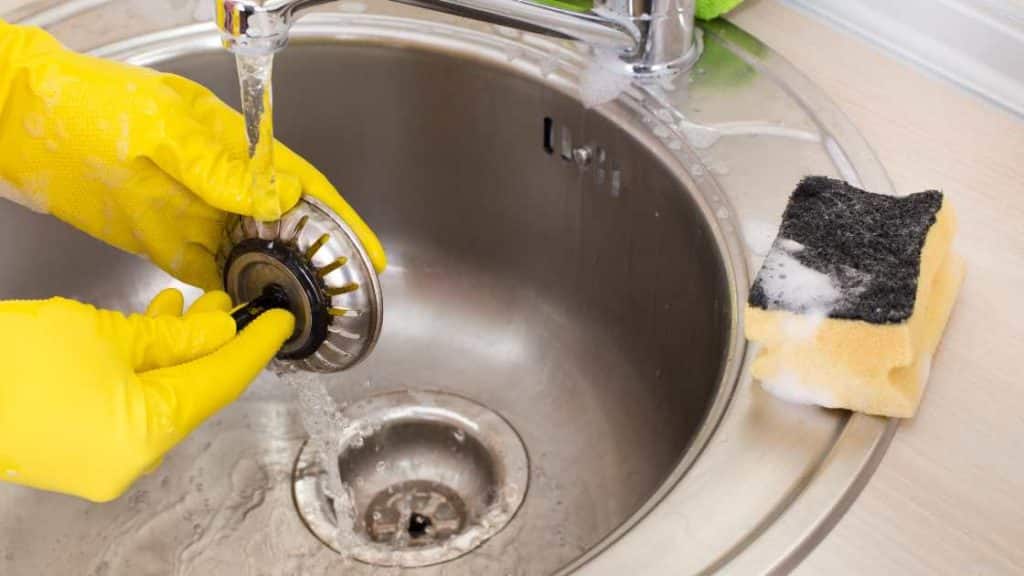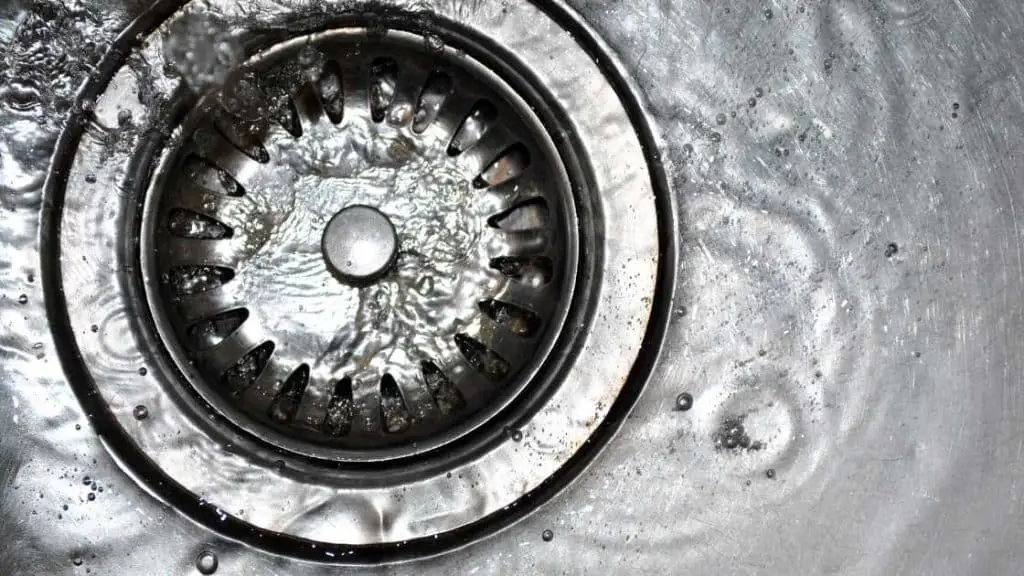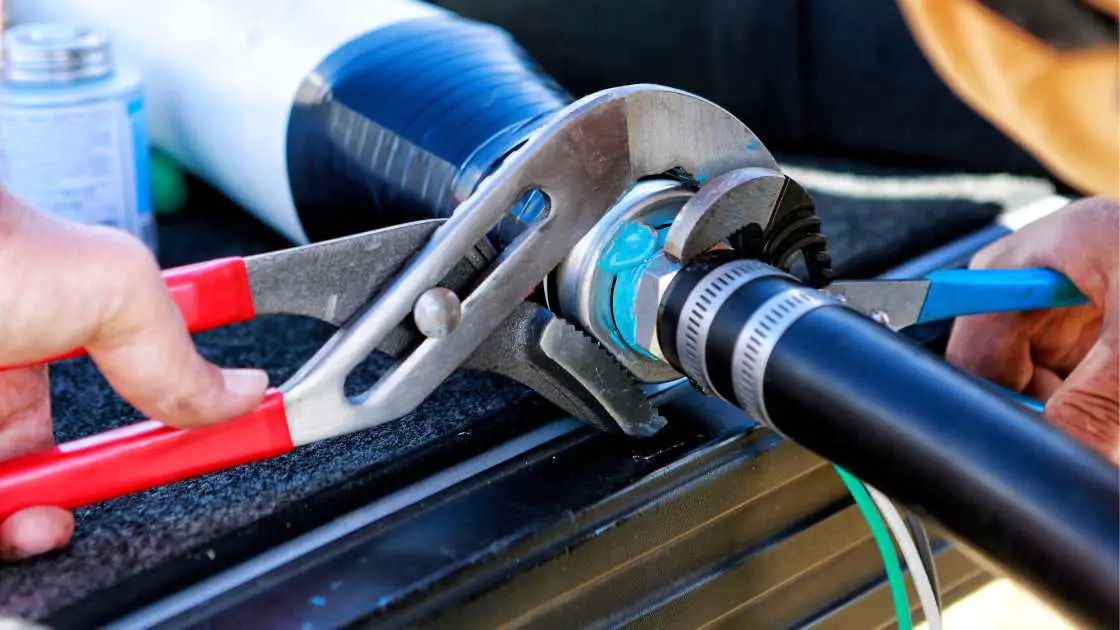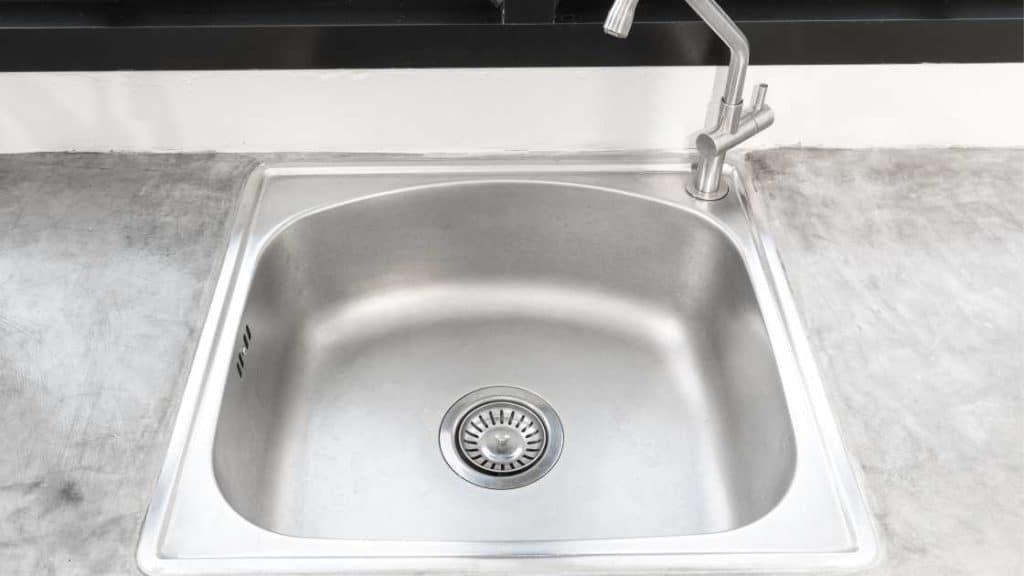To unclog an RV kitchen sink, start by using a plunger followed by a mixture of vinegar and baking soda. For stubborn clogs, employ a plumbing snake or commercial drain cleaner as a last resort.
Traveling in an RV offers the adventure of the open road and the comforts of home, including a functional kitchen. Yet, like any home, an RV kitchen can encounter problems, one of the most common being a clogged sink.
Managing clogs efficiently ensures your journey remains on track, and your living space stays clean and hygienic. Let’s explain in here about “How to Unclog Rv Kitchen Sink?”
The key to success lies in swift action to prevent a full blockage. Owners should equip themselves with basic tools and knowledge to address sink clogs.
Quick resolution maintains the integrity of your RV’s plumbing and enables you to focus on enjoying your travels without inconvenient and potentially costly disturbances.
Introduction To Rv Kitchen Sink Maintenance

Keeping your RV kitchen sink in tip-top shape matters just as much as the engine. A clogged sink can turn a fun road trip into a cumbersome ordeal. Regular maintenance is not just a good practice; it’s a road to a hassle-free journey. Let’s dive into the plumbing system and tackle common clog culprits to keep those waters flowing.
Rv Plumbing System
An RV plumbing system might seem daunting, but it’s simple once you get to know it. Water enters your RV through either city water connection or the onboard storage tank, flowing to fixtures like your kitchen sink.
It leaves through the drainage pipes to either a greywater tank or a sewage connection. A smooth system means a working sink, and that’s what we aim for.
Common Causes Of Clogs In Rv Sinks
- Food particles: Leftover bits can build up over time.
- Grease build-up: Cooking oils harden and stick to pipes.
- Non-biodegradable materials: Things like wet wipes shouldn’t go down the sink.
- Mineral build-up from hard water: It can narrow pipe pathways.
Preventative Measures For Avoiding Clogs
Keeping your RV kitchen sink from clogging is much easier than fixing a blockage. A few easy steps can ensure a free-flowing drain. Let’s dive into how to stop clogs before they start.
Regular Cleaning And Maintenance Routines
Maintaining a clean sink is your first defense against clogs. Regular upkeep avoids buildup.
- Rinse well after use: Prevent residue that can lead to clogs.
- Use natural cleaners: Baking soda and vinegar break down grease.
- Weekly checks: Inspect your sink and plumbing for early signs of issues.
Hot water flushes out your pipes. Run it down the drain weekly.
Best Practices For Waste Disposal
Dispose of waste properly to avoid kitchen sink clogs.
| Do’s | Don’ts |
|---|---|
| Scrape plates into trash | Let food go down the sink |
| Use sink strainers | Pour grease down the drain |
| Empty coffee grounds into trash | Flush with only cold water |
Be mindful with soap and detergents. Use the right amount to avoid buildups.
Initial Steps To Take When Your Rv Sink Clogs

Kitchen sink blockages can turn a pleasant RV trip sour in no time. To know how to tackle a clogged sink promptly will save you both time and trouble. Follow these initial steps for an efficient solution.
Diagnosing The Severity Of The Clog
Assessing the clog’s extent is your first task. Simple blockages often clear up with straightforward measures such as plunging or boiling water. More stubborn clogs might require additional tools or techniques.
- Listen for gurgling sounds
- Notice how fast the water drains
- Check for an unpleasant odor
Safety Considerations Before Unclogging
Before you dive into unclogging, keep safety at the forefront. Ensure the use of protective gear such as gloves and goggles, and keep your RV ventilated if you’re using chemical cleaners.
- Wear gloves to protect your hands
- Use goggles to guard your eyes against splashes
- Ensure good ventilation if chemicals are involved
Manual Methods To Unclog The Rv Kitchen Sink
Dealing with a clogged RV kitchen sink can feel like an uphill battle. But don’t let the frustration set in. Manual unclogging methods are effective and often, the quickest fixes. Roll up your sleeves, and prepare for a do-it-yourself plumbing adventure.
Using A Plunger To Dislodge Clogs
A classic plunger can work wonders on a stubborn sink clog.
- Fill the sink with enough water to cover the plunger head.
- Place the plunger firmly over the drain opening.
- Pump vigorously for about 20 to 30 seconds.
- Lift the plunger to see if the water drains swiftly.
- If necessary, repeat this process until the clog dislodges.
This simple tool can build pressure and dislodge minor blockages quickly.
Preparing And Utilizing A Plumbing Snake

When plungers fail, a plumbing snake, also known as a drain auger, steps up to the challenge.
- Insert the end of the snake into the drain.
- Turn the handle clockwise, feeding the snake further down.
- Feel for resistance which indicates a clog.
- Once you hit the blockage, rotate the snake to break it apart.
- Pull the snake out and flush the drain with hot water.
This method can reach clogs deep within your RV’s plumbing system.
Natural Solutions For Unclogging Sinks
RV life comes with joy, but a clogged kitchen sink can dampen the spirit. Before you call a plumber, try natural solutions. These methods are safe for your RV pipes and the environment.
How To Use Baking Soda And Vinegar
Baking soda and vinegar can work wonders on clogs without harsh chemicals. Here’s an easy step-by-step guide:
- First, pour a pot of hot water down the sink.
- Next, add one cup of baking soda into the drain.
- Then, follow with one cup of white vinegar.
- The mixture will fizz and bubble; let it work for 15 minutes.
- Finally, flush with more hot water.
The Effectiveness Of Boiling Water
Boiling water can be your first line of attack against a clog. It’s simple:
- Boil a large pot of water.
- Carefully pour it straight down the drain.
- Repeat if necessary to dissolve the clog.
Heat helps melt fats and grease, which are common culprits in kitchen sinks.
Chemical Drain Cleaners: Usage And Precautions
When your RV kitchen sink gets clogged, chemical drain cleaners can be a quick fix. Yet, using them requires careful handling. Your safety and the maintenance of your RV’s pipes depend on the right product and correct use.
Selecting The Right Chemical Cleaner For Your Rv
To ensure the safety of your RV’s plumbing system, select a chemical cleaner designed for RV use. These products are crafted to protect your pipes from damage while effectively dissolving clogs.
- Look for RV-safe labels on the packaging.
- Avoid products with harsh chemicals like hydrochloric acid.
- Choose cleaners that mention “septic safe” if your RV links to a septic system.
Steps To Safely Apply Chemical Drain Cleaners
With the right cleaner in hand, follow these steps for a safe and efficient unclogging process:
- Wear protective gloves and glasses to avoid skin or eye irritation.
- Read the label instructions carefully before application.
- Remove standing water from the sink.
- Pour the recommended amount of cleaner down the drain.
- Wait for the time specified on the product label.
- Flush the drain well with hot water to clear the clog.
- Avoid using your sink for several hours after the treatment.
Note: Never mix different cleaners, as they can react violently and cause injury or damage to your sink.
Advanced Techniques For Persistent Clogs
Dealing with a stubborn clog in your RV kitchen sink can be frustrating. But fear not! Advanced techniques exist for those tough blockages. Look no further for effective solutions to get your water flowing smoothly again. Follow these steps and watch even the most stubborn clogs disappear.
Exploring The Use Of A Wet/dry Vacuum
Blast away clogs with a wet/dry vacuum. This tool can be powerful. It can suck out debris from your sink pipes. First, set the vacuum to ‘wet mode’.
Then, create a tight seal over the drain. Now, turn it on. The vacuum should pull the clog right out. This method is especially good for clogs caused by large particles that a plunger can’t move.
- Verify the vacuum’s liquid capacity.
- Ensure the filter is suitable for wet use.
- Wear gloves for hygiene safety.
When To Dismantle The P-trap
Consider dismantling the P-trap if the clog remains. The P-trap is the U-shaped pipe under the sink. Wear gloves to keep your hands clean. Place a bucket underneath to catch water. Use a wrench to loosen the slip nuts. Remove the P-trap carefully. Look inside for obstructions. Clear them out. Rinse the trap with water. Reinstall the P-trap securely to prevent leaks.
- Turn off the water supply.
- Prepare your tools and bucket.
- Disassemble the P-trap gently.
Professional Assistance: When To Call A Plumber
At times, a clogged RV kitchen sink requires more than a quick DIY fix. Knowing when to seek professional help is necessary to prevent further damage. In this section, we’ll explore the signs that indicate a plumber’s expertise is needed.
Assessing The Need For Professional Help
- Persistent blockages despite your best DIY efforts.
- Unusual gurgling sounds or unpleasant odors arising from the sink.
- Water backing up into other areas.
- Sinks drain slowly repeatedly.
These scenarios can signify deeper plumbing issues that warrant a skilled plumber’s attention.
How To Find A Reliable Rv Plumber
Finding a trustworthy plumber need not be stressful. Here’s how to locate one:
- Ask fellow RVers for trusted referrals.
- Search online for plumbers with top reviews.
- Find local RV communities or forums for suggestions.
- Check with RV dealerships for recommended plumbing services.
| Resource | Action |
|---|---|
| Online Directories | Look for plumbers with RV experience. |
| Social Media Groups | Post a query for recommendations. |
| RV Parts Stores | Ask staff for referrals. |
Be sure to check for licenses and certifications before hiring. Remember, a timely call to a professional can save your RV’s plumbing system from more serious problems.
Maintenance Tips To Keep Your Rv Sink Clog-free
Exploring the open roads in your RV is exciting. A clogged kitchen sink can bring that excitement to a halt. Regular maintenance can prevent this. Let’s explore how to keep your RV sink running smoothly.
Regularly Inspect Rv Plumbing
Regular inspections prevent clog issues before they start. Make it a habit to check your plumbing. Look for signs of wear and tear. Tackle small repairs quickly. This keeps problems small and manageable.
- Examine pipes for leaks or damage
- Check the sink’s drain for debris accumulation
- Ensure water flows smoothly
Best Products And Tools For Sink Maintenance
Equip yourself with the top products and tools. This ensures your sink remains clog-free.
| Product | Use |
|---|---|
| Natural Enzyme Cleaners | Break down organic matter without harsh chemicals |
| Plunger | Dislodge minor clogs |
| Drain Snake | Reach deep clogs not fixed by plunging |
| Mesh Sink Strainer | Catch debris and prevent it from entering plumbing |
Remember, using biodegradable soap in your RV sink makes a difference. It’s easier on your system. Use warm water to periodically flush down the pipes. This keeps everything moving and helps prevent buildup.
Best Practices For Rv Sink Care
Keeping your RV kitchen sink in top shape is a must for any traveler.
Summary Of Effective Unclogging Methods
Over time, your RV sink can face blockages, causing frustration on the road. Simple yet effective methods can restore the flow and prevent future clogging. Here’s a quick recap:
- Boiling water – A great first step to dissolve minor blockages.
- Vinegar and baking soda – A powerful combo that foams away residue.
- Plunger – Dislodges stubborn clogs with suction power.
- Plumbing snake – Reaches deep blockages that liquids can’t.
- Professional help – For persistent issues beyond DIY solutions.
Long-term Habits For A Healthy Plumbing System
Keep clogs at bay with regular maintenance and smart usage. Follow these steps:
- Dispose of food scraps before washing dishes.
- Use strainers to catch smaller waste.
- Run hot water after each use to clear residual grease.
- Clean pipes monthly with vinegar and baking soda.
- Avoid harsh chemicals that damage plumbing.
Remember, take care of your sinks and they’ll take care of your RV adventures!
Frequently Asked Questions Of How To Unclog Rv Kitchen Sink
What Causes Rv Kitchen Sink Clogs?
Clogs in RV kitchen sinks often result from food particles, grease, and other debris accumulating in the pipes. Regular maintenance and cautious use are key to prevention.
How Do I Use Baking Soda To Unclog An Rv Sink?
Pour a half cup of baking soda directly into the drain. Follow it with a half cup of white vinegar, let it fizz for 15 minutes, then rinse with hot water.
Can Plungers Clear An Rv Sink Blockage?
Yes, a plunger can be effective for dislodging clogs. Ensure a good seal over the drain and plunge vigorously for best results.
Are Chemical Drain Cleaners Safe For Rv Plumbing?
Some chemical drain cleaners can damage RV plumbing. It’s advisable to use enzyme-based cleaners specifically designed for RVs or natural alternatives.
Conclusion
Dealing with a clogged RV kitchen sink can certainly throw a wrench in your travel plans. By following the steps outlined in this post, you can quickly resolve such issues and ensure a smoother journey. Remember, regular maintenance is key to preventing future blockages.
Safe travels and happy RVing!

